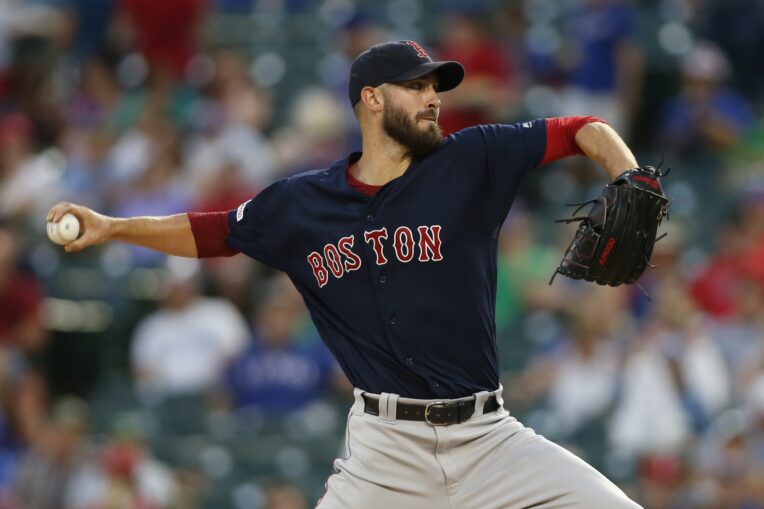
Now that the dust has settled on MLB’s 2019 Winter Meetings, we can take a breath and start to assess what happened. Brodie Van Wagenen and the New York Mets made some moves while they were in San Diego, which is cool.
Those moves didn’t include signing Gerrit Cole, Stephen Strasburg, or Anthony Rendon, but they did bolster the starting rotation by bringing Michael Wacha and Rick Porcello aboard.
When thinking about New York’s immediate roster needs and their willingness (or, lack thereof) to spend toward the top of the free-agent market, these moves were good for one big reason. If the Mets don’t sign an impact reliever, Zack Wheeler‘s departure at least won’t pull from a potential weakness since Seth Lugo and Robert Gsellman will now likely remain in the bullpen.
If everyone stays healthy — which we all know is a huge if for the Mets — there are six starters for five rotation spots. Wacha plans on being a starter in 2020, and one would imagine Porcello is thinking the same — he’s racked up just three relief appearances (all came in 2013 for the Detroit Tigers). Porcello is also fresh off the worst year of his career when using ERA (5.52) and SIERA (4.86) as the barometer. Clearly, the Mets (and other teams since he reportedly had multi-year offers on the table) are confident he can bounce back.
But how exactly can he go about doing that? John Harper of SNY wrote an interesting piece recently in which he chatted with scouts about how Porcello may have to adjust moving forward. In using their opinions and statistics from a strong late-season push, the consensus appears to be that he should live lower in the strike zone by going back to throwing his sinker with more regularity.
The numbers from his final 17 innings pitched showed that doing such a thing could make sense, but it’s also a small sample size. With that in mind, I looked back at his sinker usage and opponent wRC+ since 2016 (the year he took home the American League Cy Young Award). While he’s certainly been throwing it less often, that pitch doesn’t seem like it’s been a huge part of his success.

Porcello’s sinker should probably be the most-used pitch in his arsenal in any given year because it’s typically been that way throughout a career that’s been mostly productive. The execution of the pitch could certainly improve, but the bigger issue is Porcello’s four-seamer, which ended up being his most frequently thrown pitch in 2019.
Although the wRC+ from opposing batters jumped from 98 to 118 between 2018 and 2019 for this specific offering, the right-hander’s strikeout rate went from 33.1% to 21.6% over the same period of time. There may have also been some trickle-down effect with his changeup — opponent wRC+ went from 98 to 158 over the past two seasons, along with a significant drop in strikeout rate (20.0% to 8.3%).
For someone like Porcello, who owns an average fastball velocity that hovers around 90 miles per hour, the secondary pitches in his arsenal are a crucial aspect of his overall effectiveness. That’d also mean a rebound from his slider is important, which took a huge downturn based on value produced on a per-100-pitch basis. Since 2016, FanGraphs has tabbed this pitch’s yearly value at 1.94, 0.68, 0.77, and -1.47. Opponent wRC+ against this offering has taken a similar trajectory: 65, 93, 76, and 118.
By many accounts, this past season was not a good one for Porcello. However, he does have the benefit of a reasonably long and decent track record as a big-league pitcher to fall back on. He’ll be getting the advantage of pitching in the National League after spending the duration of his career in the AL while also getting a positive park shift by calling Citi Field home instead of Fenway Park. Of course, he’ll also have some extra motivation to rebuild his value before heading back out onto the open market next winter.
As Harper said himself, the Mets would be happy to have him slot into the back of the rotation, take the ball every five days and keep the Mets in ballgames more often than not when he does toe the slab. Even if he ends up producing just 1.8 fWAR again like he did in 2019, that value would be enough return on investment to justify his $10 million salary.
Simply by looking at the structure of their contracts, it seems as if the Mets view Porcello as more of a rotation option than Wacha at the moment. They both have work to do in rebuilding their value during the upcoming season, so this area of the roster will at least be something fun to watch during Spring Training.














